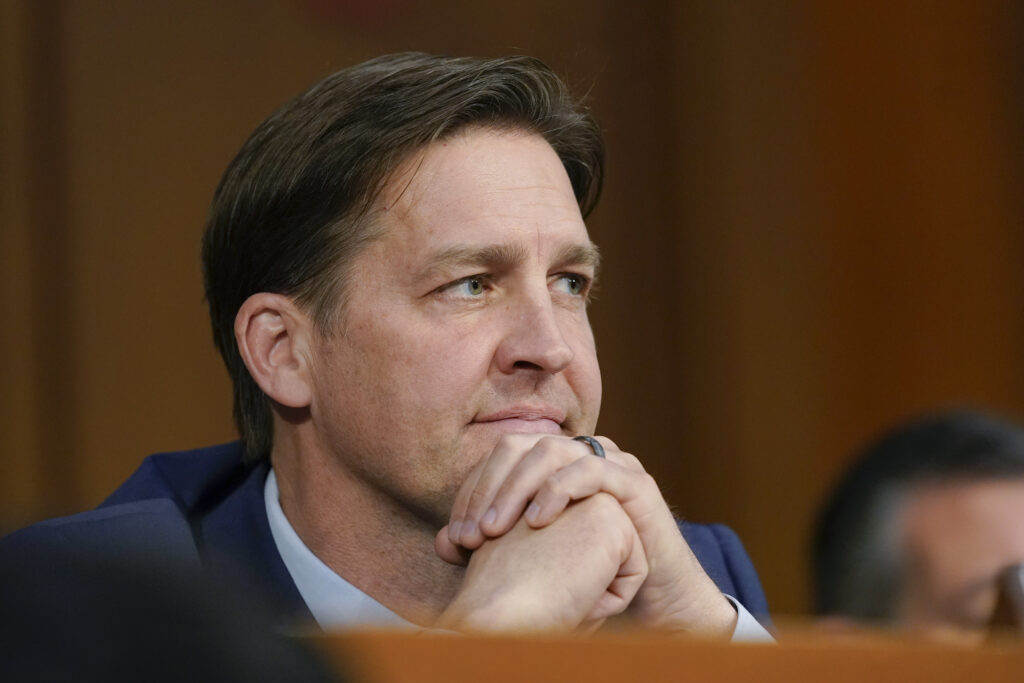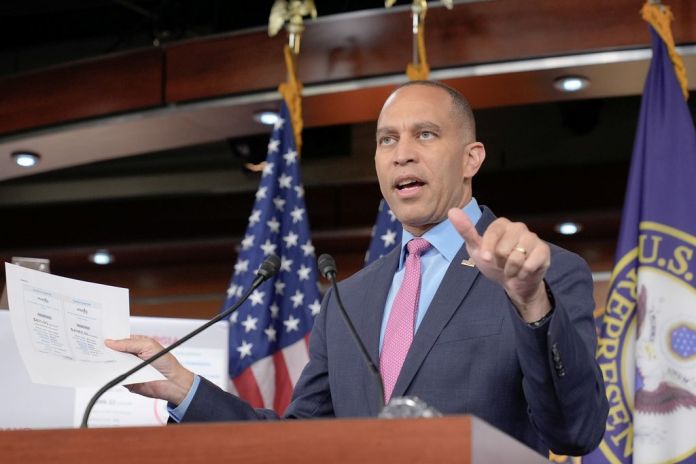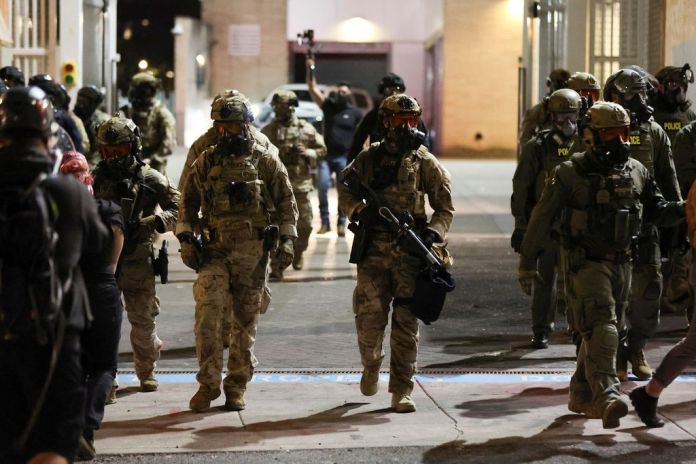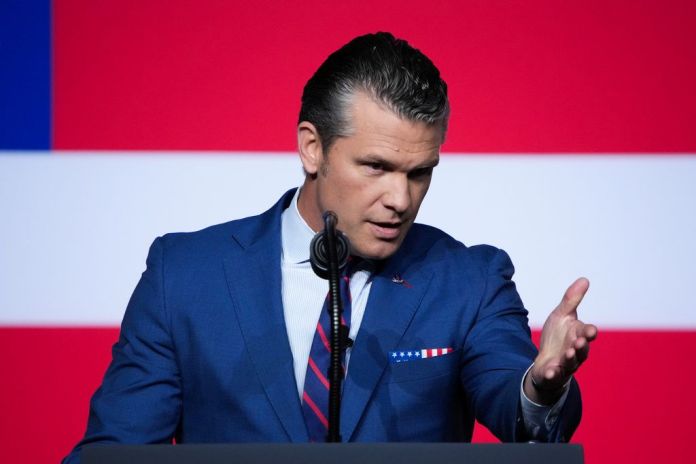Gov. Ron DeSantis (R-FL) has called for an inquiry into former University of Florida President Ben Sasse’s expenses following a report from the school’s student newspaper about spending tripling under his leadership.
Sasse reportedly spent $17.3 million in his first year as president of the university, which was up from the $5.6 million his predecessor, Kent Fuchs, spent in his last year. A majority of the spending came from big contracts with consulting firms and high-salaried remote positions for former staffers of Sasse while he was a senator.
Bryan Griffin, a communications director for DeSantis, said in a statement that discussions with the university and the Florida Board of Governors are underway.
Florida Chief Financial Officer Jimmy Patronis said the “reports of UF’s exorbitant spending by Ben Sasse’s office are concerning,” and that his agency, the Florida Department of Financial Services, will “offer auditing services” to assist in the inquiry.
Sasse responded to the report, posting a lengthy statement on X saying there was “substantial funding for a number of important initiatives,” but denied it was “inappropriate.”
“Now, it is true that there was substantial funding for a number of important new initiatives. I am very happy to defend each and every one of these initiatives … because from day one, the whole reason I agreed to leave a great job representing the salt-of-the-earth people of my home state of Nebraska is precisely because higher education needs massive reform,” he said.
“I am unabashedly for big reform in higher education. This has never been a secret — certainly not when I was being pursued and publicly vetted for the UF presidency. And the unanimous support two years ago of the Board of Trustees — followed by the near-unanimous support (one dissenting vote) of the Board of Governors — is precisely why I agreed to pull on oars together in a state on such a rocketship trajectory,” he added.
Sasse also defended the hiring decisions, pointing to the board and selection committee’s approval.
“One of my preconditions in agreeing to accept this calling was being able to bring big-cause, trusted people from my last few teams along to help build a stronger, more dynamic UF — and happily, the board and selection committee embraced this,” he said.
He also said the university did not find anything concerning with the spending at the time, and that the “budget went through the appropriate approval process.”
After serving as a senator from Nebraska from 2015 to 2023, Sasse was appointed the university’s 13th president in November 2022. At the time, Sasse denied that DeSantis had a hand in his candidacy.
After Sasse resigned due to his wife’s epilepsy diagnosis, DeSantis said he wasn’t “involved necessarily” in the selection of Sasse.
“I don’t know how it developed,” he said. “Someone said, ‘You should check this out,’ that’s what happened.”
He made clear that he would not be involved in the selection process for the new president.
CLICK HERE TO READ MORE FROM THE WASHINGTON EXAMINER
“The University of Florida’s board has really, really high-quality people, and I think they’ve done a fantastic job,” DeSantis said. “They’ll really be the ones that are going to be leading that effort.”
Fuchs, Sasse’s predecessor, has been serving as interim president since Aug. 1 while the university looks for a new president.
2024-08-16 20:24:00, http://s.wordpress.com/mshots/v1/https%3A%2F%2Fwww.washingtonexaminer.com%2Fpolicy%2Feducation%2F3124630%2Fdesantis-inquiry-former-university-florida-president-ben-sasses%2F?w=600&h=450, Gov. Ron DeSantis (R-FL) has called for an inquiry into former University of Florida President Ben Sasse’s expenses following a report from the school’s student newspaper about spending tripling under his leadership. Sasse reportedly spent $17.3 million in his first year as president of the university, which was up from the $5.6 million his predecessor,
Gov. Ron DeSantis (R-FL) has called for an inquiry into former University of Florida President Ben Sasse’s expenses following a report from the school’s student newspaper about spending tripling under his leadership.
Sasse reportedly spent $17.3 million in his first year as president of the university, which was up from the $5.6 million his predecessor, Kent Fuchs, spent in his last year. A majority of the spending came from big contracts with consulting firms and high-salaried remote positions for former staffers of Sasse while he was a senator.
Bryan Griffin, a communications director for DeSantis, said in a statement that discussions with the university and the Florida Board of Governors are underway.
Florida Chief Financial Officer Jimmy Patronis said the “reports of UF’s exorbitant spending by Ben Sasse’s office are concerning,” and that his agency, the Florida Department of Financial Services, will “offer auditing services” to assist in the inquiry.
Sasse responded to the report, posting a lengthy statement on X saying there was “substantial funding for a number of important initiatives,” but denied it was “inappropriate.”
“Now, it is true that there was substantial funding for a number of important new initiatives. I am very happy to defend each and every one of these initiatives … because from day one, the whole reason I agreed to leave a great job representing the salt-of-the-earth people of my home state of Nebraska is precisely because higher education needs massive reform,” he said.
“I am unabashedly for big reform in higher education. This has never been a secret — certainly not when I was being pursued and publicly vetted for the UF presidency. And the unanimous support two years ago of the Board of Trustees — followed by the near-unanimous support (one dissenting vote) of the Board of Governors — is precisely why I agreed to pull on oars together in a state on such a rocketship trajectory,” he added.
Sasse also defended the hiring decisions, pointing to the board and selection committee’s approval.
“One of my preconditions in agreeing to accept this calling was being able to bring big-cause, trusted people from my last few teams along to help build a stronger, more dynamic UF — and happily, the board and selection committee embraced this,” he said.
He also said the university did not find anything concerning with the spending at the time, and that the “budget went through the appropriate approval process.”
After serving as a senator from Nebraska from 2015 to 2023, Sasse was appointed the university’s 13th president in November 2022. At the time, Sasse denied that DeSantis had a hand in his candidacy.
After Sasse resigned due to his wife’s epilepsy diagnosis, DeSantis said he wasn’t “involved necessarily” in the selection of Sasse.
“I don’t know how it developed,” he said. “Someone said, ‘You should check this out,’ that’s what happened.”
He made clear that he would not be involved in the selection process for the new president.
CLICK HERE TO READ MORE FROM THE WASHINGTON EXAMINER
“The University of Florida’s board has really, really high-quality people, and I think they’ve done a fantastic job,” DeSantis said. “They’ll really be the ones that are going to be leading that effort.”
Fuchs, Sasse’s predecessor, has been serving as interim president since Aug. 1 while the university looks for a new president.
, Gov. Ron DeSantis (R-FL) has called for an inquiry into former University of Florida President Ben Sasse’s expenses following a report from the school’s student newspaper about spending tripling under his leadership. Sasse reportedly spent $17.3 million in his first year as president of the university, which was up from the $5.6 million his predecessor, Kent Fuchs, spent in his last year. A majority of the spending came from big contracts with consulting firms and high-salaried remote positions for former staffers of Sasse while he was a senator. Bryan Griffin, a communications director for DeSantis, said in a statement that discussions with the university and the Florida Board of Governors are underway. Florida Chief Financial Officer Jimmy Patronis said the “reports of UF’s exorbitant spending by Ben Sasse’s office are concerning,” and that his agency, the Florida Department of Financial Services, will “offer auditing services” to assist in the inquiry. Sasse responded to the report, posting a lengthy statement on X saying there was “substantial funding for a number of important initiatives,” but denied it was “inappropriate.” “Now, it is true that there was substantial funding for a number of important new initiatives. I am very happy to defend each and every one of these initiatives … because from day one, the whole reason I agreed to leave a great job representing the salt-of-the-earth people of my home state of Nebraska is precisely because higher education needs massive reform,” he said. “I am unabashedly for big reform in higher education. This has never been a secret — certainly not when I was being pursued and publicly vetted for the UF presidency. And the unanimous support two years ago of the Board of Trustees — followed by the near-unanimous support (one dissenting vote) of the Board of Governors — is precisely why I agreed to pull on oars together in a state on such a rocketship trajectory,” he added. Sasse also defended the hiring decisions, pointing to the board and selection committee’s approval. “One of my preconditions in agreeing to accept this calling was being able to bring big-cause, trusted people from my last few teams along to help build a stronger, more dynamic UF — and happily, the board and selection committee embraced this,” he said. He also said the university did not find anything concerning with the spending at the time, and that the “budget went through the appropriate approval process.” After serving as a senator from Nebraska from 2015 to 2023, Sasse was appointed the university’s 13th president in November 2022. At the time, Sasse denied that DeSantis had a hand in his candidacy. After Sasse resigned due to his wife’s epilepsy diagnosis, DeSantis said he wasn’t “involved necessarily” in the selection of Sasse. “I don’t know how it developed,” he said. “Someone said, ‘You should check this out,’ that’s what happened.” He made clear that he would not be involved in the selection process for the new president. CLICK HERE TO READ MORE FROM THE WASHINGTON EXAMINER “The University of Florida’s board has really, really high-quality people, and I think they’ve done a fantastic job,” DeSantis said. “They’ll really be the ones that are going to be leading that effort.” Fuchs, Sasse’s predecessor, has been serving as interim president since Aug. 1 while the university looks for a new president., ,  , https://www.washingtonexaminer.com/wp-content/uploads/2024/01/AP23008729452093-1024×683.jpg, Washington Examiner, Political News and Conservative Analysis About Congress, the President, and the Federal Government, https://www.washingtonexaminer.com/wp-content/uploads/2023/11/cropped-favicon-32×32.png, https://www.washingtonexaminer.com/feed/, Zach LaChance,
, https://www.washingtonexaminer.com/wp-content/uploads/2024/01/AP23008729452093-1024×683.jpg, Washington Examiner, Political News and Conservative Analysis About Congress, the President, and the Federal Government, https://www.washingtonexaminer.com/wp-content/uploads/2023/11/cropped-favicon-32×32.png, https://www.washingtonexaminer.com/feed/, Zach LaChance,







